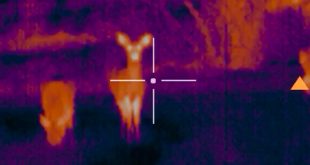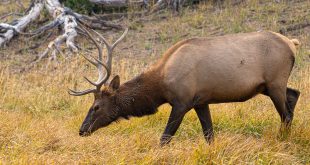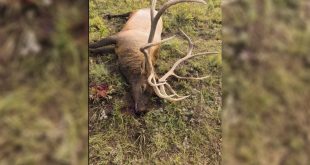Tips & Tactics – Mule Deer Jedi
By Brian Barney
“In my experience, there’s no such thing as luck.” Obi-Wan Kenobi
Hunting mule deer across the West is a special experience. The mule deer we all dream about are out there in every state in multiple units. The tall bucks, wide bucks, deep forks, stickers, kickers exist on our public lands. Now, a premium tag gives you a better chance at a giant, but that is not the answer to consistent success. The answer is to build our archery hunting skill set to a point to show up in any unit and expect success. It also doesn’t do any good to draw a premium tag if we haven’t worked tirelessly on our mule deer hunting skills; it will most likely end in disappointment. I learned this early on and have dedicated myself to be in the best shape, have extreme mental toughness, be good at e-scouting, be a great archer and hone my instincts to find bucks and execute high-percentage stalks. It’s taken me a lifetime to get to where I am at. That’s why, alongside Guy Eastman and Dan Pickar, we came up with an idea for a mule deer course.
Now, I poured my heart and soul into this course and am so proud and excited how it came out. It’s over 10 hours with over 100 videos that cover mule deer A-Z. There is literally everything I have learned hunting mule deer and puts it in a format for you to learn and build the necessary skills to be consistently successful. There is not enough space on these pages to cover all the information in the course, but I thought I would pull some excerpts from the course to help you on your mule deer journey.
“Use the force…”
I want to state the obvious here—mule deer are awesome. I love their towering racks on a skyline, and these deer are perfectly suited for the wild extreme county out west. They can live from the desert floor to the foothills to the mountain peaks. They have evolved from thousands of years of avoiding mountain lions—one of if not the sneakiest predators on planet earth. Mule deer senses are keen with great noses, big ears to hear the smallest snap of stick and good eyesight to catch the smallest movement. To sneak within a stone’s throw of a mature buck with a bow and arrow is one of the greatest challenges the West has to offer. The greater the challenge, the greater the reward, and a trophy mule deer is among the top of my list of accomplishments. I will tell you the journey starts and ends with the mind.
The power of the mind is our greatest asset as humans. If you want something in life, the first step is to set your mind to it. If you want it badly enough, you can accomplish anything. For me, that’s bowhunting success, and I have built my life around it. So, to be good at mule deer hunting, you have to be willing to put in the work. Mental toughness can be slippery and tough to obtain. We grow our mental toughness through putting ourselves in uncomfortable situations. I gain a lot of mental toughness through my physical preparation. I trail run a bunch, ruck heavy weight, do mountain scouting trips and some CrossFit. I make myself put in the work day after day. This discipline of getting out running elevation and miles in gnarly weather builds toughness and discipline. This comes into play on a tough hunt when I am seven days in and feel like throwing in the towel. I have worked too damn hard to give in early and know I have more to give. There is a saying I use—“persistence is deadly”—that rings so true in the mountains. I have the ability to grind and earn an opportunity. I can draw from tough training and tough hunts to keep after it. So, decide what you want in life, develop your mental toughness, put in the work and go get it!
“These ARE the Droids you’re looking for”
Locating deer is an art that takes time to hone. I have hunted deer in every western state and every different habitat. It’s hard to tell you to look at a certain facing hillside like a south-facer, as it’s different in every range. Sure, in heavy cover like northern Montana, bucks love to be on south-facing hillside because the north side is all trees and rocks with no feed. The south slopes grow lush feed, have sporadic cover and this seems to be what bucks prefer. Take this to the open country of some parts of Nevada—which, by the way, I leave for in six days—and you will be disappointed. The south faces will be burnt off with very little cover and few deer. In that country they will prefer the north side with better feed and more cover. So, it’s not as simple as just looking at one face. I find deer on north, south, east and west slopes; it all depends on the range. So, to consistently find deer, you have to get good at finding “bucky” terrain. That’s where my 25 years in multiple habitats come into play.
Mule deer are not spread out equally throughout the landscape. Even in the best units there will be places void of deer and then pockets of country the deer prefer. Your job as a muley hunter is to find these places. I like to let deer sightings guide me. I will make hikes into country and grab good vantages. If I am seeing does and small bucks, usually it means the larger, more mature bucks are close, usually higher in elevation. In foothills, breaks or badlands they are usually in some isolated canyon close by. After I can find bucks, I take tabs on the country they are in. I look at the facing of the slope, look of the basin, elevation and so on. Then I can transpose that information to other locations in the range or in the unit. That’s how I begin to solve the puzzle of where bucks like to be in that area. I start to learn inside a unit what is “bucky” and spend my time looking at those features.
“Do or do not. There is no try.”
There are a lot of reasons I love to hunt mule deer, but the stalk is among the top of the list. It’s a chess game with a calculated, planned-out stalk. Then it’s methodical, slow and controlled under intense adrenalin. This is what I live for, a chance to close in on a mature buck. The first step in this equation is deciding when to go “all in” and when to sit back and be patient. I like to put stalks in two categories—high percentage and low percentage. I am looking for the former to make a play and avoid the latter. It’s tough, it’s not always black and white; in fact, it’s shades of gray. No, not the book so popular with the ladies, but rather really tough decisions that are not clear cut. You have to let your instincts guide you, and your instincts are honed through experiences. You have to be decisive and look for these high-percentage stalks.
A high-percentage stalk is when you have a good chance to kill that buck. I love stalking deer in their beds, as I know where they will be for the next hour or two, and I can sneak to that spot. To have this be high percentage, I have to know the exact spot that deer is bedded. If he disappears into a thick patch of trees, then it turns to low percentage and I will wait for a better opportunity. Also, afternoon beds are higher odds versus morning beds. In the afternoon, the thermal winds are more consistent and directional winds get stronger. This will keep my scent good but will also hide some of my approach noise. Hunting bucks on their feet can also be high percentage. It’s about finding them in a good spot. You want to look at the wind, the topography and the approach. It’s important to find these bucks in a good spot to go “all in” or it almost always falls apart.
When closing in on a mule deer, you have to move slow, like the hands of a clock. When you think you are moving slow enough, slow down. You have to get your head wrapped around this or nearly all stalks will fail. My mindset is I am not going to be the one who screws this up. If the bucks move off before I get there, that’s fine, but I am not going to move too fast and bust them out of there. It’s also important to not “stalk to failure.” I see guys keep stalking closer and closer until they bust a buck out. Your number one job is to keep the element of surprise. Stalk in keeping yourself concealed and let the buck make the last move. Patience in these situations is definitely a virtue. Patience kills the buck, and you have to work to develop this skill. I become more and more patient every season. I am comfortable in bow range waiting for the right time to bend the limbs back. It takes making a hundred right decisions to have a stalk go right. We get better through experience, but you can definitely cut the learning curve by knowing what the right moves are.
Okay … well, just like that, I am out of page space. This is just scratching the surface of what’s in the mule deer course. I put everything inside that course that has helped me become proficient at hunting public land mule deer. I have no doubt this course will cut your learning curve by years. It’s a small price to pay to gain this valuable knowledge that has taken me a lifetime to obtain. You still have to put in the work and gain the experience, but this is a road map to success. Good luck on your journey, and good hunting this season!
https://youtu.be/Q_rRS-tz78c?si=WElopTp6Iem-jEPU
Join Eastmans’ Elevated Podcast host Brian Barney and his friends for an early season high country mule deer bow hunt on this episode of Beyond the Grid. This year, Brian was challenged with up-close lightning storm encounters, very few water sources, and stalking a buck in its morning bed.
 Eastmans' Official Blog | Mule Deer, Antelope, Elk Hunting and Bowhunting Magazine | Eastmans' Hunting Journals
Eastmans' Official Blog | Mule Deer, Antelope, Elk Hunting and Bowhunting Magazine | Eastmans' Hunting Journals





